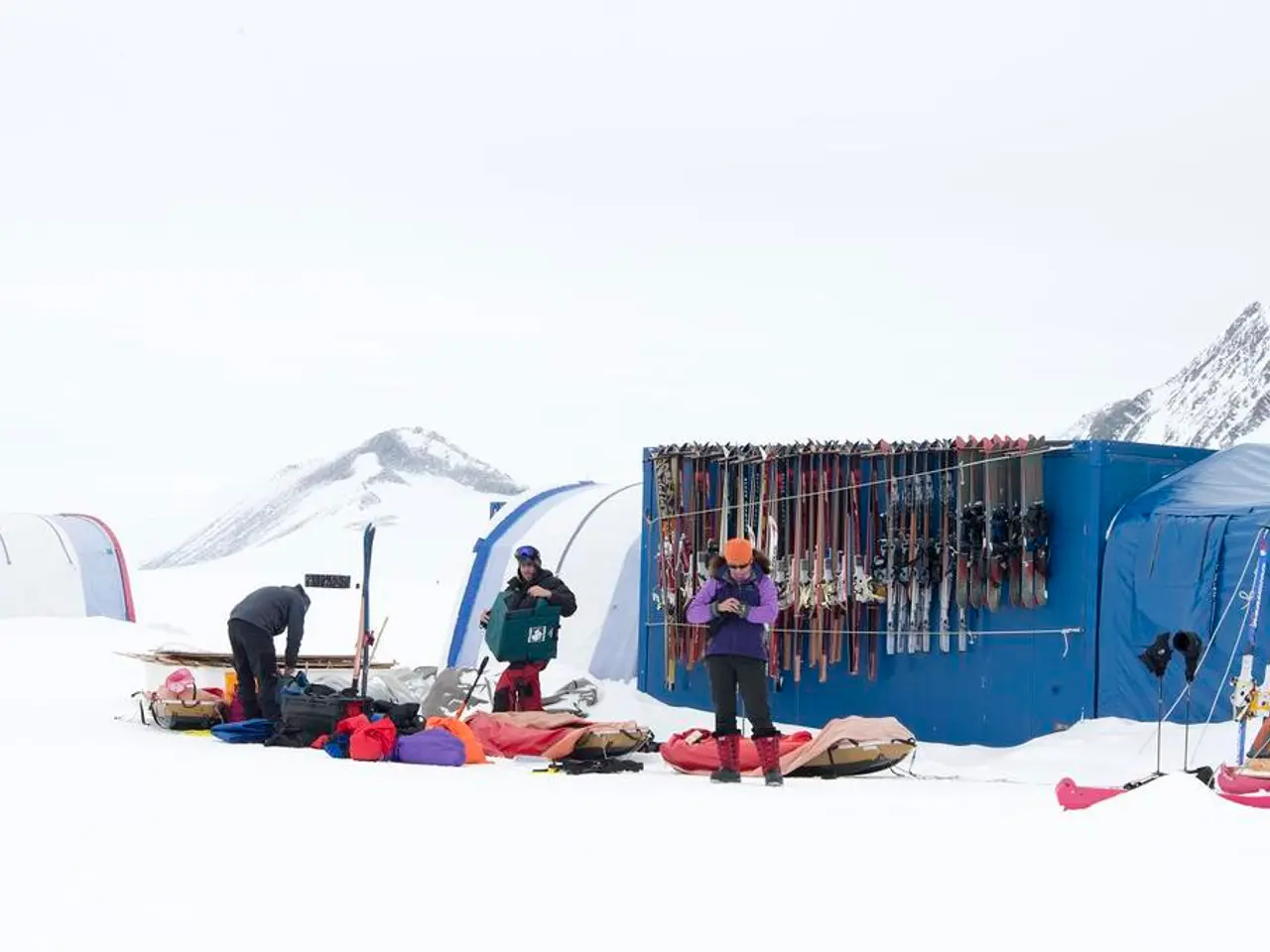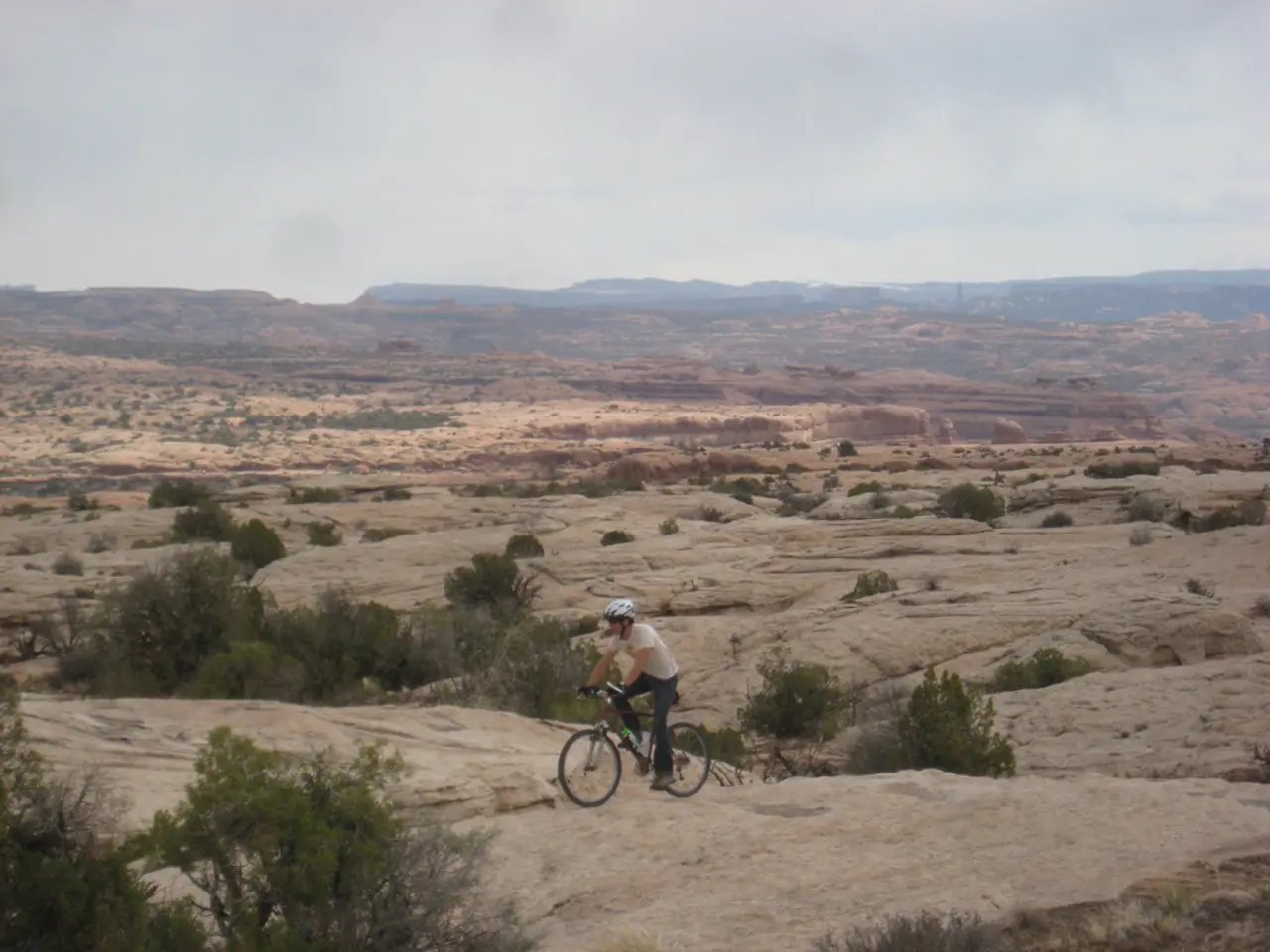Stranded Mountaineers Confess to Crossing Boundaries in Ice Ascent Endeavor
===================================================================
In a harrowing incident that took place on July 2, ice climber Jake found himself in a perilous situation off The Remarkables. Jake, who had recently moved to New Zealand with his climbing partner, had been exploring the country's rugged landscapes for several months.
Jake and his partner had a fair amount of experience in the area, with Jake having previously climbed Lake Alta twice and completed the Grand Traverse. His partner, too, had been ice climbing in the region twice this winter. However, their overconfidence in their skills led them to cut corners, including neglecting to research the avalanche conditions.
On the day of the incident, the pair set off at 7am with the intention of being back at their car by 3pm. Unfortunately, a small avalanche was triggered while they were heading along a common access route. The incident disrupted their plans, and they decided to climb Blue Velvet, then the south face of Single Cone, and the first 30m pitch of Touch Down.
The rescue crew, who were alerted to the incident, noted that the pair didn't have a first aid kit, an emergency communications device, or avalanche equipment. The climbers were lost on the mountain for 10 hours before the rescue team could reach them at 4.30am.
Jake describes the day as "the worst day of [his] life." He acknowledges not utilizing the available information and resources as a mistake. "I regret not taking five extra minutes to pack the necessary equipment," he said. Jake also regrets their decision to climb Blue Velvet and Single Cone, stating that they were too keen to go climbing.
To prevent similar incidents, climbers should focus on building strong technical skills, physical fitness, and comprehensive knowledge of alpine hazards. This includes taking winter mountaineering courses to learn ice axe and crampon techniques, alpine route finding, and snow stability assessment to understand avalanche risk in dynamic winter conditions.
Practical snow experience, fitness training, technical skill development, avalanche awareness, proper route planning and communication, and equipment and emergency preparedness are key preparation steps.
Moreover, climbers can find the avalanche forecast under alerts on Plan My Walk. It's also advisable to contact the ski patrollers at The Remarkables Ski Field for information about avalanche conditions and safe travel times.
Jake is grateful for the rescue team and is committed to learning from the incident and taking appropriate professional courses to prevent future accidents. He urges fellow climbers to prioritize safety and preparation when venturing into New Zealand's backcountry ice climbing zones.
Sports like ice climbing require extensive preparation and knowledge of alpine hazards. Jake, reflecting on his harrowing incident, acknowledges the importance of carrying avalanche equipment and a first aid kit, and emphasizes the need for climbers to take winter mountaineering courses to develop technical skills and understand avalanche risk.







